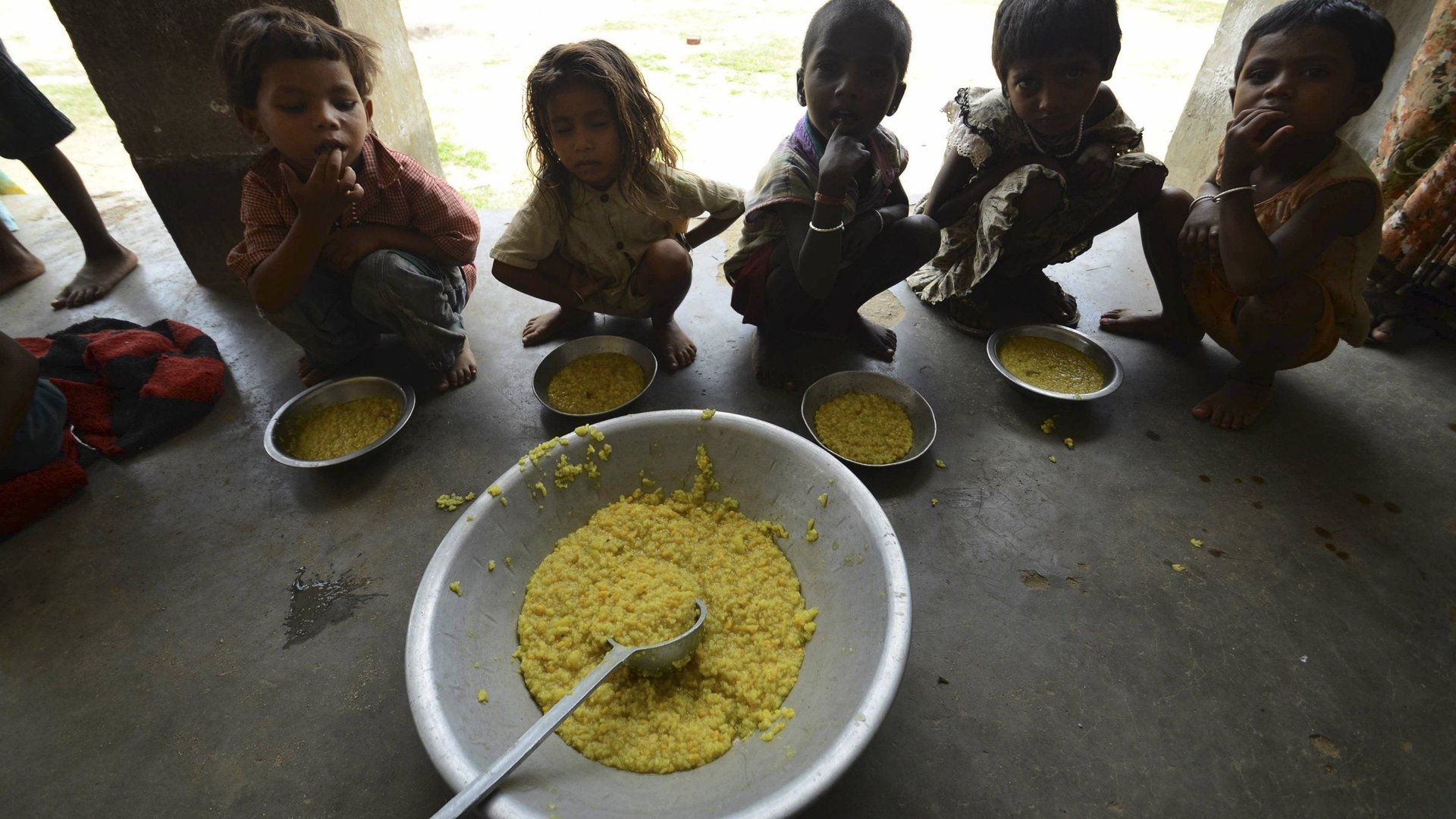India’s school lunch deaths are a grim warning for its massive new food program
Soon after starting to eat the familiar lunch of rice, lentils and potatoes, some kids started to vomit and collapse. Within hours, about two dozen were dead.


Soon after starting to eat the familiar lunch of rice, lentils and potatoes, some kids started to vomit and collapse. Within hours, about two dozen were dead.
The poisoning deaths of poor schoolchildren in India’s impoverished state of Bihar this week has provoked riots and sparked fierce debate about the value of the country’s far-reaching school meals program, and triggered a familiar round of finger-pointing among politicians and officials.
What hasn’t been addressed is how India’s government hopes to avoid repeating this tragedy as it rolls out a much grander food initiative. The school program currently feeds about 110 million students, but India’s pending $21 billion food security program is designed to feed a staggering 800 million—the largest of its kind in the world, by far.
So far, the ambitious scope of the National Food Security Ordinance, which was passed by the Cabinet in June and must be ratified in the current session of Parliament to become a law, seems only to be matched by the government’s unpreparedness to actually execute it.
The NFSO’s most attention-grabbing component has been the distribution of subsidized grain to 67% of the country’s population. But as development economists like Jean Dreze have noted, that is largely a restructuring and expansion of an existing program (one which is so inefficient that in some areas 100 percent of the food earmarked for the poor is stolen before reaching them.)
Much more important, he argues, and in some ways more ambitious is the massive expansion of cooked food programs, including guaranteed meals for all pregnant women and mothers with children up to six months of age, free meals for all children from six months to six years old, and free meals for any government school children from six to 14 years and for any children considered malnourished.
However, these cooked meal programs are almost completely unregulated, and the tragedy of the Bihar poisonings shows how dangerous that can be. Although investigations are still underway, early indicators are that the deaths were caused by improper food storage: a container that was being used to store cooking oil may have previously held insecticide, officials said.
Food storage is an already endemic issue plaguing India’s food distribution to the poor. Millions of tons of grains earmarked are infested with vermin or rot before they reach the needy.
Earlier this week, India’s finance minister, P. Chidambaram, assured reporters that almost all states were ready to implement the food program. Before India expands free meals to millions more, the government had better be sure he’s right.